The Connoisseur’s Guide To Harvesting Weed Plants
You’ve grown your cannabis plants for months and the time has finally come to take them down, dry and cure them. Even though you’re in the final stretch, a proper harvest is the single most important factor to ensure you get the most from your marijuana. Drying, trimming and curing the right way will determine whether you’ve wasted your time growing crappy mids, or triumphantly created aficionado-quality pot. With this in mind we present to you, The Connoisseur’s Guide To Harvesting Weed Plants.
Guide To Harvesting Weed Plants: When and How
When it comes to harvesting cannabis, timing is everything. If you take your plants down too soon, they’ll be immature with underdeveloped resin glands containing less of the vital essential oils that give pot its flavors, scent and potency. Chop down too late, and THC will have degraded and converted to CBN, resulting in a more lethargic stone.
Just because a seed breeder says that their product matures in 60 days of flowering doesn’t make that an accurate date for cropping. Some companies will under-report flowering times in an effort to get you to purchase their beans.
You must also take into account any downtime your plants spent recovering from the stress caused by transplanting or other aggravating factors. Sometimes this can add weeks to your flowering stage and push your harvest time back significantly.
The amount or percentage of red hairs is also not an accurate way to judge the proper time to harvest your plants. It’s true that these pistils darken from white to orange and then red as the buds ripen, but it’s only an indicator that harvest is approaching and not the best determining factor. For a true guide to harvesting weed plants, you need to look closer.
You Must Magnify!
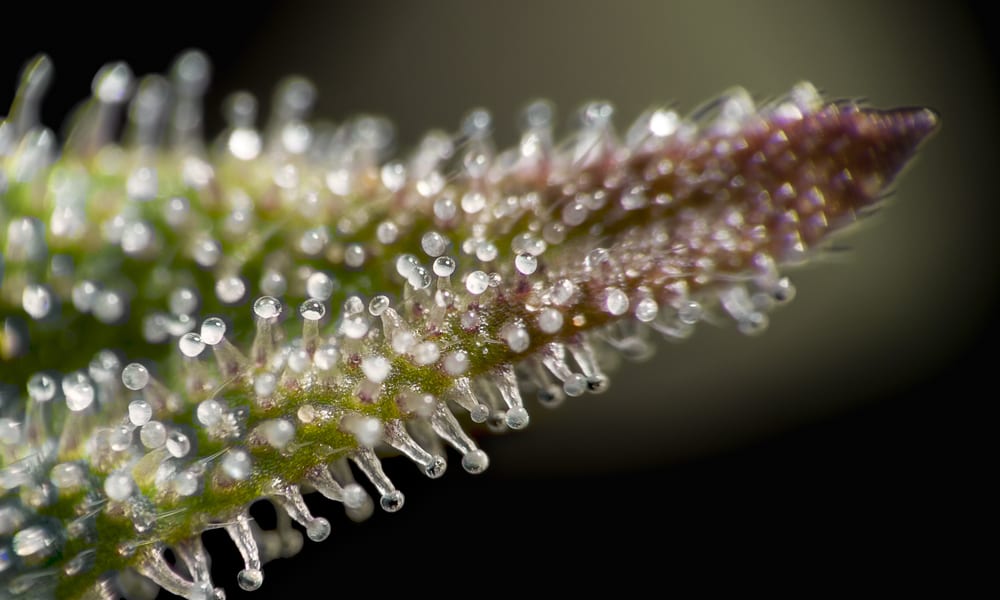
Get a close look at the trichome gland heads.
The best thing you can do is to get a magnification device such as a loupe or microscope that will give you a closer look at the actual trichomes on your buds. Along with a guide to harvesting weed plants, you need the proper tools.
Sometimes referred to as “crystals,” trichomes are actually glands filled with essential oils made up of cannabinoids, such as THC, CBD and CBN, as well as flavonoids and terpenes. They look a little bit like tiny clear glass mushrooms with a stalk and a bulbous head. It is these gland heads that are separated and pressed together to make hashish.
As harvest approaches, the gland heads will turn from clear to a cloudy or “milky” white, and then eventually turn amber as they begin to go beyond ripeness. If you harvest when most of the gland heads are clear and cloudy, you’ll get a more uplifting high. If you wait until most are amber, the effects will be more lethargic.
It really comes down to personal preference, but most people prefer the cloudy and that is when the THC levels are at their highest with no degradation.
Trimming Wet or Dry?
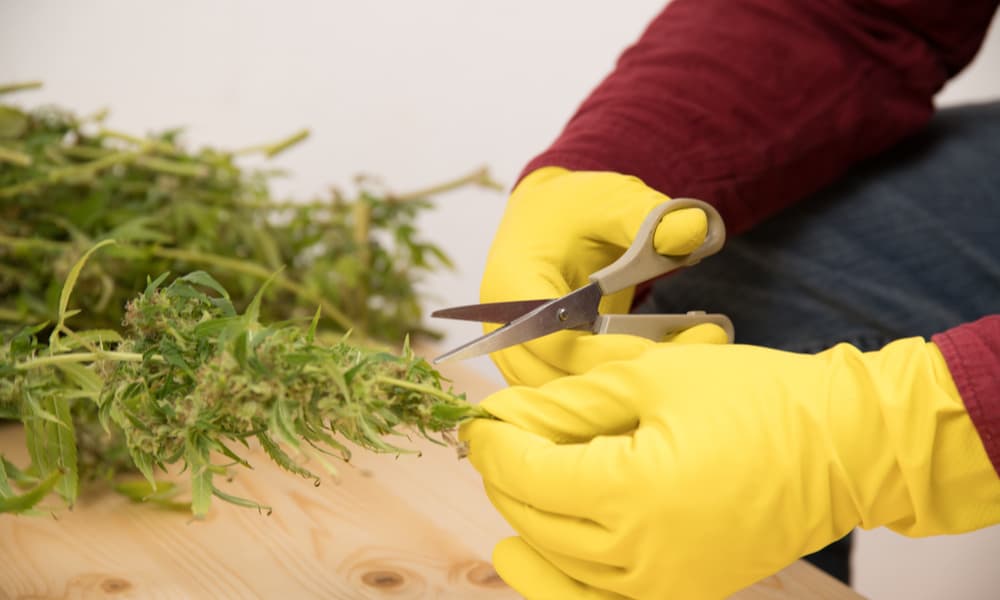
Should you trim wet or dry?
Trimming wet means taking off all the fan leaves and sugar leaves before drying and trimming dry means hanging your plants up with the leaves intact and then removing them after the branches have dried out. Basically, it comes down to personal preference how you wish to accomplish this but both methods have their drawbacks and advantages. Even in a guide to harvesting weed plants, there are choices you need to make based on the pros and cons.
Trimming wet is easier because the leaves are still turgid and their rigor makes them stick out from the flowers more. After drying, leaves will droop and curl closer to the buds and it makes it a bit more difficult to clip them off. So the wet trim can be more convenient.
On the other hand, if you wait to trim dry, the plants will take a bit longer to dry out due to the water in the leaves. Slower drying can make for a smoother cleaner smoking experience because the longer it takes to dry your crop, the more it will lose the “green” chlorophyll smell and taste.
My advice is to use the best of both worlds. Trim off any large fan leaves and big sugar leaves that protrude out from the buds but leave behind some of the sugar leaf to keep the drying slow and protect your flowers and their essential oil-filled trichome glands. Then, after the branches have dried and snap instead of bending, do your second more thorough trim just before starting the curing process in glass jars.
The Connoisseur’s Trim
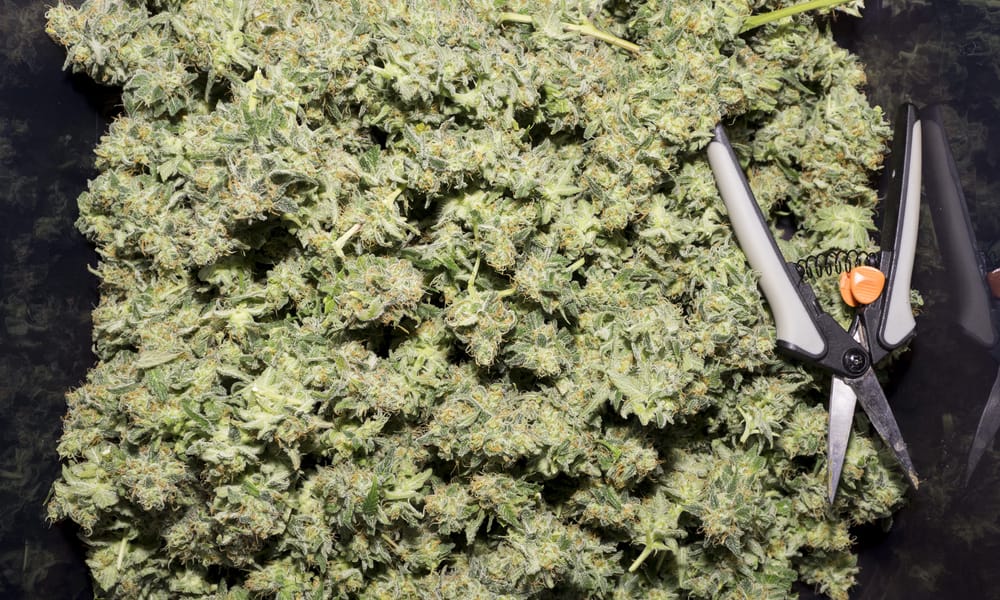
Trim closely to ensure a proper burn.
Take off the large fan leaves first.
Be sure to remove them at their base (where they meet the branches) to avoid leaving thick stalks within your flowers. Trimming entire plants can be quite cumbersome depending on their size, so remove individual branches to make them easier to trim.
I like to do this from the top down as this creates “hooks” out of the branches, which makes them easy to hang up to dry.
Holding the individual branches at their base, keep your scissors angled upwards and clip off any plant material that protrudes from the buds. This includes the tiny “crows feet” leaves that start at the base of each flower.
Rotate the branches with one hand, while you snip with the other. Use the tips of the pruning shears or trimmers to get in deep between the nuggets for a proper manicure. Remove everything that isn’t covered in glandular trichomes.
If you’re trimming wet, now is the time to hang up your trimmed branches to dry.
If you’re trimming dry, you can now remove the trimmed buds from their branches and put them into glass jars to cure.
Just remember to clip as close to the buds as you can. Soon you’ll be enjoying the ultimate aficionado experience—consuming properly trimmed cannabis!
Hang Dry Vs. Laid Out On Racks
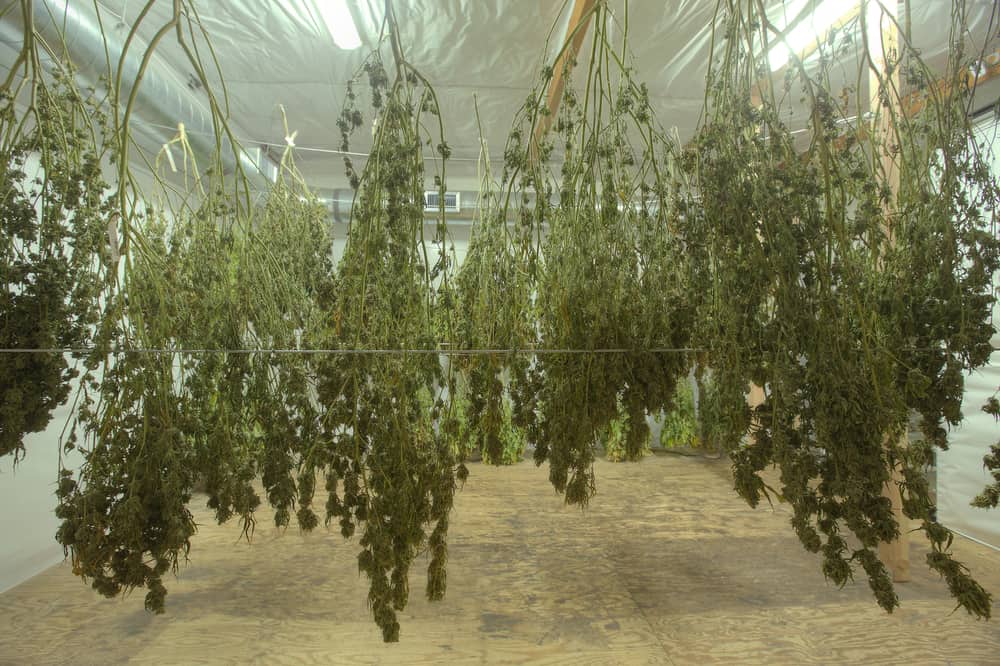
Photo by Canna Obscura
The drying room is a place that must be carefully monitored. Keep in mind that your plants will be giving off a large amount of moisture into the room as they dry. It’s important to pull wet air out and keep air circulating in the room without actually having fans blowing right on your hanging branches, which can dry them out prematurely resulting in a harsh taste and burn.
Also, growers in dry places such as Colorado struggle to extend their drying time with humidifiers, while farmers in more humid climates such as Northern California use dehumidifiers to pull water from the air in order to avoid mold growing on their buds.
The ideal temperature for a drying room is between 65 – 75 degrees Fahrenheit and humidity between 45 – 55 percent in a dark room. Within 6 – 10 days your branches should snap instead of bending and the buds should feel popcorn dry on the outside. This is the time to cut the individual buds from the branches and put them into glass jars to begin the curing process.
Connoisseur Curing and Storage
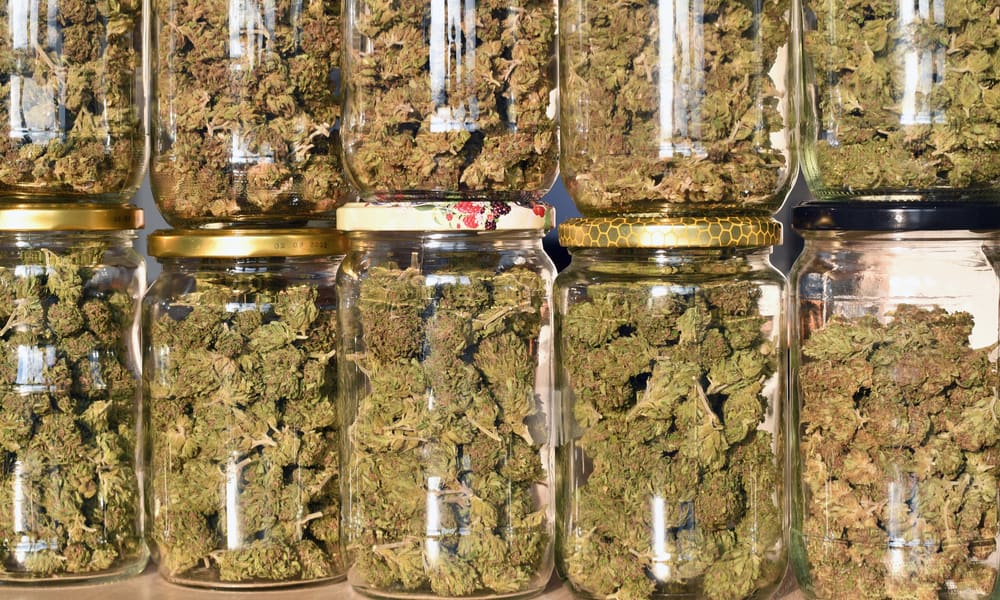
Keep jars in a cool dark place.
After hanging to dry, your flowers must be cured in glass jars to slowly remove the remaining moisture and reduce the “grassy” smell and taste of chlorophyll. When cannabis is properly cured, subtle scents and flavors are revealed and the finished product gains in depth and complexity. The experience of consuming cured flowers will convince a true aficionado to never smoke commercial-grade uncured cannabis again.
When the drying branches snap instead of bending, place the buds into sealed glass jars kept in a cool dark place. Heat and light will quickly degrade the essential oils containing the precious terpenes, cannabinoids, and flavonoids. Open the jars daily to “burp them” releasing the moist air and replacing it with fresh air. After a few weeks or more of curing, your buds will taste and smoke perfectly.
The Final Hit: Connoisseur’s Guide To Harvesting Weed Plants
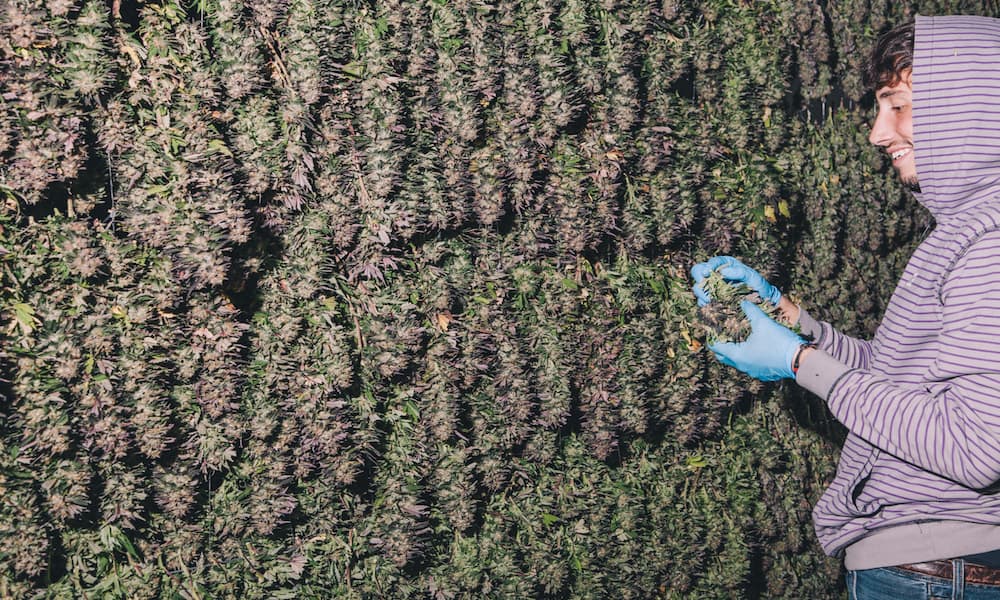
Photo by Canna Obscura
So now you know how to harvest your weed plants the right way. It’s your job to ensure that you put this knowledge into practice and don’t try to skimp or cut corners on the process. Once you’ve consumed properly dried and cured pot, you won’t want to ever go back to smoking commercially-produced buds. And be sure to share our guide to harvesting weed plants with anyone you think will benefit from this information so that the quality of cannabis will improve worldwide!
The post The Connoisseur’s Guide To Harvesting Weed Plants appeared first on High Times.


